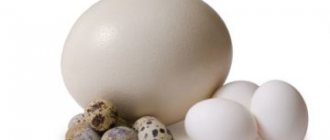Every loving owner has wondered: is it possible to add at least a little salt to a dog’s food? After all, unsalted food seems so fresh and tasteless.
Opinions among breeders differ sharply: some believe that this is completely unnatural and harmful, while others, on the contrary, insist that high-quality table salt has the most positive effect on the pet’s well-being. The truth, as always, lies somewhere in the middle.
Benefit
To answer this question, it is worth turning to history and statistics. In veterinary practice, there have been cases where dogs hopelessly ill with rickets were saved by adding regular salt to the diet. So how does it work and what benefits does the product provide?
The chemical composition of salt has the simple formula NaCl (sodium chlorine), where:
- Sodium – participates in the body’s metabolic processes, promoting better absorption of amino acids and calcium. Prevents problems with the musculoskeletal system.
- Chlorine – along with potassium, chlorine is responsible for the functioning of the nervous system, regulating inhibition processes. Prevents seizures and heart rhythm disturbances.
Reference! Chlorine is part of gastric juice and is involved in protein processing processes.
How to understand that there is not enough salt?
The lack of salt is also not indifferent to the animal’s body. Salt deficiency leads to stress and lethargy in the dog, and causes a constant feeling of thirst. The functioning of the digestive system is also impaired. Gastric juice consists of hydrochloric acid, which is formed on the basis of chlorine particles, and the acid-base balance is ensured by sodium ions.
Do dogs need salt?
As mentioned earlier, there is no consensus on this matter, even among scientists. Some experts believe that salt deficiency leads to abnormalities of the skeletal system, especially in puppies during the active growth period. Therefore, your dog’s food must be salted yourself.
Salt comes into the body directly from natural products, and there is no need to artificially introduce it into your pet’s food.
However, whether or not your dog’s food needs to be salted is up to you to decide. As the experience of many dog breeders shows, there is no single proper nutrition plan that is suitable for absolutely everyone.
How not to harm your pet?
Let's summarize all of the above:
- salt is an essential element for any living organism. It is involved in the creation of blood, promotes the formation of gastric juice, and also affects appetite. Undoubtedly, salt in large quantities is dangerous for dogs, since an excess of it can lead to the death of the pet. However, there is no need to be afraid of it, you just need to be extremely careful. One pinch of salt is enough for a dog’s body.
- Be sure to read the ingredients of what you feed your pet, choose only high-quality products, and don’t get caught up in advertising. Also pay attention to its composition. A reputable manufacturer, confident in its products, has a composition that is well-formed and accessible to customers. If you often give your dog clean meat or fish, then there is no need to salt them, since they already contain the required amount of salt.
- You also need to carefully monitor how much and how often your pet gets from your table. All cheeses and sausages contain a lot of salt. Of course, nothing will happen from one slice, the dog’s body will simply receive the daily requirement, and there is no need to add salt to the main food. and do not forget about clean water in the required quantity. It will help you monitor your dog's salt balance. If the amount of salt increases sharply, the pet will drink more. Therefore, always ensure that the drinking bowl is full.
It is not surprising that every good owner strives to do only the best for his pet. That is why he thinks about whether or not to add salt to food. However, before you decide, you need to carefully weigh the pros and cons. After all, the line between excess and deficiency of salt in dogs is so thin, and the life of your beloved pet may depend on it.
About the author: Anna Mikhailovna Tarasova
My specialty is surgery and veterinary medicine for dogs and exotic pets, I also do internal medicine and radiology.
Read more about me in the “About Us” section. There is still no clear answer to the question of whether dogs should be given salt. Although it has been the subject of heated debate among dog owners and veterinarians for quite some time.
Why can't you give?
“Salt is white poison for animals,” say many adherents of natural nutrition. They justify their opinion by the fact that dogs are carnivorous by nature, and in the wild they have nowhere to get salt.
This statement is true only if you do not take into account that there are also natural sources of the substance: poultry, fresh meat, fresh blood, sea fish and other animal products.
Another thing is food “from the table”: most often, there is too much salt in dishes prepared for humans. A loving owner, without knowing it, can spoil the health of his pet by indulging in dog begging.
How is it harmful?
A dog that regularly treats itself to salty cheese, sausages and herring may look healthy, but only up to a certain point. A slow process of salt deposition begins in her body, which, in turn, can cause the development of the following problems:
- diseases of the genitourinary system: cystitis and kidney stones;
- swelling;
- uncontrollable appetite.
Important! You cannot control the amount of salt consumed and calculate its norm if you feed your dog from the table. To make your pet feel good, give up this habit.
Harm from salt
As for table salt, its abuse can negatively affect the health of the animal and even lead to death. The research revealed that the lethal dose of salt for an animal is 3 grams. Salt poisoning can occur in dogs, and dehydration will worsen the situation.
Excess salt can also lead to a number of the following diseases:
- osteoporosis;
- intraocular pressure;
- formation of kidney stones.
So should you add salt to your dogs food? If you have chosen high-quality food to feed your pet, then you will have to give up salt, because it contains this additive.
Animals are allowed a third of the portion that is recommended for people. For small breed dogs it is 0.15 grams, for large breeds it is a maximum of 1.7 g. In this quantity it can be added to natural food (porridge, vegetables, meat).
Can it be added to food?
A dog can get enough salt from fresh meat, fish and eggs. But what if you feed your dog porridge with boiled food? After all, some of the natural salt will naturally evaporate during cooking.
You can solve this problem by adding a little table salt during cooking: about 1/3 less than you would add for yourself. Its taste and grains should not be felt on the tongue.
How much should be in the diet?
This question is quite controversial and the answer depends on many factors:
- dog size;
- her age;
- past or existing illnesses;
- diet (natural or dry food).
Only a veterinarian can give you the correct answer, based on a biochemical analysis of the dog’s blood.
Signs of excess
Excess salt in a dog's diet can be identified by the following signs:
- Drink plenty of water – regardless of weather conditions and physical activity, the dog is constantly thirsty.
- Frequent urination - the second point directly follows from the first. In this case, the color of urine is lighter than usual.
- Swelling : Particularly noticeable on the face and paws.
- Gastrointestinal disorders (diarrhea, vomiting).
- Increased fatigue , as a result of a slow heart rate and oxygen starvation.
- Neurological seizures (epileptic seizures).
Even if excess salt was promptly corrected with a therapeutic diet, its consequences can affect the condition of the kidneys. Therefore, the dog must be examined for kidney failure and stones.
Reference! In advanced cases, an excess of salt in a dog's diet can lead to its death.
The tricky thing is that salt deficiency is very similar in its symptoms to its excess:
- the dog is thirsty;
- behaves passively and sluggishly (refuses games and physical activity);
- gets irritated and shows aggression.
Be sure to consult with your veterinarian before you decide to change your diet by adding or eliminating table salt.
Is there a lethal dose?
Veterinarians claim that one-time consumption of a dish with an amount of salt of 3 grams per 1 kg of a dog’s weight is fraught with death. The dosage may be lower if the animal is already suffering from the effects of too much salt in the diet.
Therefore, you should not uncontrollably salt food, relying only on your own taste or recipes found on the Internet.
Is there a lethal dose?
When a pet owner wants to know whether dogs can salt their food, it is also worth studying information about exactly what amount should not be allowed in the pet’s diet. This figure will vary depending on the age and size of the animal, but experts have accurately calculated that an adult dog dies when consuming 3 g of salt per kilogram of weight.
Note! In some cases, even 1 or 2 grams will be too much for your pet. Cooking with this amount of salt is contraindicated for adult small breed dogs. A puppy can die even after consuming 0.5 g.
It is also important to remember that animals should not be fed sugar. However, here the situation is somewhat simpler: in order to become poisoned by sweets, you need to eat a really large amount, which would seem crazy even to a person. At the same time, sugar contributes to the development of obesity, diabetes and many other diseases without bringing any benefit.
Does food poisoning happen?
If the dosage of salt is not lethal, but is very close to the critical level, the dog may experience poisoning. It is caused by dehydration of cells of vital organs and a sharp increase and then inhibition of metabolic processes.
Table salt poisoning can be recognized by the following signs:
- the animal drinks greedily, but at the same time refuses food;
- the dog behaves passively and depressed;
- uncontrolled contractions of the limbs are observed;
- visible mucous tissues become pale and bluish due to asphyxia.
What to do if you eat it?
The first thing to do is to provide the animal with access to an unlimited amount of clean drinking water. If the animal does not drink on its own, then you need to do deep and abundant enemas through the mouth. In the future, in order to calm the irritated stomach, the dog is prescribed a course of flaxseed starch jelly.
For puppies
Puppies weaned from their mother's milk should be switched to either balanced super premium food or a natural diet based on fresh meat, cottage cheese and eggs.
In both the first and second cases, puppies have enough sodium and chlorine for harmonious growth and development; accordingly, there is no need to add salt.
Can dogs salt their food on a natural diet?
Another thing is that a pet cannot consume raw meat every day; not all dog breeders have the means to purchase such products. If this is meat sold on an industrial scale in stores, then in most cases it contains salt.
Can dogs salt their food on a natural diet?
- Many sellers soak meat in salt water to increase its weight. Accordingly, there is no need to introduce additional salt in this case. If the meat was bought secondhand from a farmer you know, then it is necessary to add salt to such food.
- Let us give an example: in all Soviet nurseries, dogs were fed with the introduction of salt. When preparing food, it was added in an amount of half of the norm that people administer to themselves. All dogs grew up healthy and strong.
- Accordingly, a small amount of salt is still acceptable. Under no circumstances add enough salt to yourself. Introduce sodium chloride in small amounts so that it is barely noticeable in taste.
Cutlets for dogs
Induce vomiting
Regular table salt can be used as an emergency remedy if your dog has eaten something wrong. In order to induce vomiting, open the dog's mouth, fix the tongue and place half a teaspoon of salt at the very root of it.
As a rule, the reaction will follow immediately. There is no need to be afraid that the situation will only get worse: during nausea, the dog’s pylorus closes and the absorption of toxic substances stops.
Reference! Vomiting can also be caused by a solution of potassium permanganate or copious gastric lavage.
In feed
If you feed your pet high-quality Superpremium or holistic food, there is no need to worry. Their composition is balanced in such a way that the dog gets enough of all nutrients, including salt.
Economy class food is a completely different matter. Manufacturers often add too much salt to enhance the taste or as a preservative, which is extremely detrimental to the health of the animal.
When can salt be harmful?
It also happens that even a small amount of this white seasoning from a salt shaker can cause serious harm to the animal’s body. Should dogs salt their food when cooking if they have health problems? It is strictly prohibited to add it to food for those animals that have been diagnosed with one of the following diseases:
- myocarditis, heart failure;
- gastritis, ulcer;
- renal failure, urolithiasis;
- arthritis, osteochondrosis, osteoporosis;
- hepatitis, cholecystitis.
Should I salt the food of a dog that is sick? This issue must be clarified with your veterinarian.
Marine and others
So, we found out that salt, in optimal quantities, brings only benefits to the dog’s body. But which salt to choose from all the possible options?
- Marine – contains all the microelements that the dog’s body requires for normal functioning.
- Iodized - not suitable for dogs with problems with the thyroid gland.
- Stone , passed through a spice mill, is very close in composition to sea.
- Small “extra” is the most common, but most useless option, since during processing all useful substances or microelements evaporate from the salt.
If you are still in doubt about choosing a product, consult your veterinarian. It is possible that your specialist will recommend a vitamin and mineral supplement to help maintain sodium and chlorine levels at optimal levels.











